 You know what’s even better than serving on an award committee? Having someone else write about it. As I’ve mentioned in the past, I was on the judging committee for this year’s Boston Globe-Horn Book Awards alongside Chair Joanna Rudge Long and Roxanne Feldman. It was Roxanne who reported on our discussion, and even took photos of where we met (Joanna’s gorgeous Vermont farmhouse), what we ate, and more. There is also a particularly goofy shot of me that is impressive because even without knowing that there was a camera pointed in my direction, I seem to have made a silly face. I am nothing if not talented in that respect.
You know what’s even better than serving on an award committee? Having someone else write about it. As I’ve mentioned in the past, I was on the judging committee for this year’s Boston Globe-Horn Book Awards alongside Chair Joanna Rudge Long and Roxanne Feldman. It was Roxanne who reported on our discussion, and even took photos of where we met (Joanna’s gorgeous Vermont farmhouse), what we ate, and more. There is also a particularly goofy shot of me that is impressive because even without knowing that there was a camera pointed in my direction, I seem to have made a silly face. I am nothing if not talented in that respect.
Speaking of listening in on committees and their discussions, ALA is next week (she said, eyeing her unfinished Newbery/Caldecott Banquet outfit nervously) and that means you have a chance to sit and listen to one particular committee talk the talkety talk. I am referring, of course, to the ALA Notables Committee. This year they’ve released the list of books on their discussion list online for your perusal. A lot of goodies there, as well as room for a lot of books I hope they get to eventually.
I was very sad to hear about the passing of Lois Duncan. Like many of you, she was a staple of my youth. When Jules Danielson, Peter Sieruta, and I were writing our book Wild Things: Acts of Mischief in Children’s Literature we initially had a section, written by Peter, on why Lois stopped writing suspense novels for teens. It’s a sad story but one that always made me admire her deeply. She was hugely talented and will be missed.
 Speaking of Wild Things, recently I was sent a YA galley by Marcus Sedgwick called Blood Red, Snow White. But lest you believe it to be a YA retelling of the old Snow White / Rose Red fairytale, it ain’t. Instead, it’s about how Arthur Ransome (he of Swallows and Amazons) got mixed up with Trotsky’s secretary and a whole lotta Bolsheviks. What does this have to do with Wild Things? This was yet ANOTHER rejected tale from our book. Read the full story here on our website where we even take care to mention Sedgwick’s book (it originally was published overseas in 2007).
Speaking of Wild Things, recently I was sent a YA galley by Marcus Sedgwick called Blood Red, Snow White. But lest you believe it to be a YA retelling of the old Snow White / Rose Red fairytale, it ain’t. Instead, it’s about how Arthur Ransome (he of Swallows and Amazons) got mixed up with Trotsky’s secretary and a whole lotta Bolsheviks. What does this have to do with Wild Things? This was yet ANOTHER rejected tale from our book. Read the full story here on our website where we even take care to mention Sedgwick’s book (it originally was published overseas in 2007).
As I’ve mentioned before, my library hosts a pair of falcons each year directly across from the window above my desk. I’ve watched five eggs laid, three hatch, and the babies get named and banded. This week the little not-so-fuzzyheads are learning to fly. It’s terrifying. Far better that I read this older Chicago Tribune article on the banding ceremony. They were so cute when they were fuzzy. *sigh*
In other news, Harriet the Spy’s house is for sale. Apparently.
Sharon Levin on the child_lit listserv had a rather fascinating little announcement up recently. As she told it, she’d always had difficulty finding a really fast way to catalog her personal library. Cause let’s face it – scanning every single barcode takes time. Then she found a new app and . . . well, I’ll let her tell it:
“Shelfie is a free app for iOS and Android (www.shelfie.com) where you can take a picture of your bookshelf and the app will automatically recognize your book spines and generate a catalog of your library. In addition, the team behind the app has made deals with over 1400 publishers (including HarperCollins, Macmillan, and Hachette) to let you download discounted (usually around 80% off) or free ebook or audiobook edition of your paper books (right now these publisher deals cover about 25% of the books on an “average” shelf). The app also lets you browse other readers’ shelves. Shelfie will also give you personalized book recommendations based on how readers with similar taste in books to you organize the books on their shelves. The founder of Shelfie is named Peter Hudson and he’d love to hear any suggestions about how he can make the app better. Peter’s email is [email protected].“
Thanks to Sharon Levin for the heads up.
I leave NYPL and its delightful Winnie-the-Pooh toys and what happens? The world goes goofy for the story of A.A. Milne and Christopher Robin. Now we just found out that Domhnall Gleeson (a.k.a. Bill Weasley in the Harry Potter films) has just been cast as Milne in an upcoming bio-pic. Will wonders never cease?
 Are you familiar with the works of Atinuke? An extraordinary storyteller, her Anna Hibiscus books are among my favorite early chapter books of all time. They do, however, occasionally catch flack of saying they take place in “Africa” rather than a specific country. Recently, K.T. Horning explained on Monica Edinger’s recent post Diversity Window, Mirror, or Neither that Atinuke did this on purpose so that kids in Africa could imagine the stories as taking place in their own countries. That makes perfect sense. The ensuing discussion in Monica’s post is respectful, interesting, and with a variety of different viewpoints, all worth reading. In short, the kind of talk a blogger hopes for when he or she writes something. Well done, Monica.
Are you familiar with the works of Atinuke? An extraordinary storyteller, her Anna Hibiscus books are among my favorite early chapter books of all time. They do, however, occasionally catch flack of saying they take place in “Africa” rather than a specific country. Recently, K.T. Horning explained on Monica Edinger’s recent post Diversity Window, Mirror, or Neither that Atinuke did this on purpose so that kids in Africa could imagine the stories as taking place in their own countries. That makes perfect sense. The ensuing discussion in Monica’s post is respectful, interesting, and with a variety of different viewpoints, all worth reading. In short, the kind of talk a blogger hopes for when he or she writes something. Well done, Monica.
Big time congrats to the nominees for the Neustadt Prize. It’s a whopping $10,000 given to a children’s author given on the basis of literary merit. It may be the only children’s award originating in America that is also international. Fingers crossed for all the people nominated!
Hooray! The Children’s Book Council has released their annual Building a Home Library list. I love these. The choices are always very carefully done and perfect for clueless parents.
In other CBC news, I got this little press release, and it’s worth looking at:
“For the second consecutive year, the Children’s Book Council has partnered with The unPrison Project — a 501(c)3 nonprofit dedicated to empowering and mentoring women in prison — to create brand-new libraries of books for incarcerated mothers to read with their babies at prison nurseries. Fourteen of the CBC’s member publishers answered the call by donating copies of over 35 hand-picked titles for children ages 0-18 months for each library. The books will be hand-delivered and organized in the nurseries by Deborah Jiang-Stein, founder of The unPrison Project and author of Prison Baby. Jiang-Stein was born in prison to a heroin-addicted mother, and has made it her mission to empower and mentor women and girls in prison.”
You know who’s cool? That gal I mentioned earlier. Julie Danielson. She’s something else. For example, while many of us might just say we were interested in James Marshall, she’s actually in the process of researching him. She even received the James Marshall Fellowship from The University of Connecticut’s Archives & Special Collections at the Thomas J. Dodd Research Center. As a result she spent a week looking through the James Marshall Papers there. Their sole stipulation? Write a blog post about it. So up at the University’s site you’ll find the piece Finding the Artist in His Art: A Week With the James Marshall Papers. Special Bonus: Rare images you won’t find anywhere else.
Daily Image:
I take no credit to this. I only discovered it on Twitter thanks to Christine Hertz of Burlington, VT. It may constitute the greatest summer reading idea I’ve seen in a very long time. Public libraries, please feel free to adopt this:
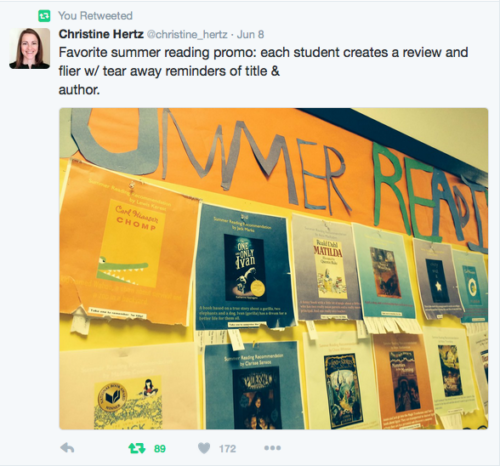

by Addy Farmer
About two minutes ago, the Summer Holidays stretched out like this ...
 |
| not a computer in sight |
There were delicious plans afoot: After a suitable number of days lolling in bed followed by jumping about in the garden, me and my family would go on holiday, read masses, get into all sorts of scrapes, rescue anything that stood in the way and actually climb a mountain. Not only that but I would have loads and loads of time to WRITE.
 |
| Moominpapa could write whenever he wanted to |
Inevitably, it didn't turn out like that. I will not bore you, dear reader, with the list of what got in the way of my perfectly reasonable expectations but it was mostly to do with
not living in the 1950s. I did write, in snatches, but it was mostly editing and revising. It's good to have the quiet head-space for that full-on flowing and original story writing.
Never mind because in the end reading is the stuff of writing.
The media would have us think that Summer is a time for reading and I did read alot although not on the beach. But I don't think that I read anymore than I do the rest of the year. Radio 4 even had a brief say about how summer reading was no different to winter
reading on the daily commute, really. Most of my summer reading has been a writer new to me,
Frances Hardinge. I whipped through the brilliant, '
Verdigris Deep' and
'The Lie Tree' and '
Cuckoo Song'. I've just started,
'A Face of Glass'. These are cracking good stories and that is what I like to read any time of the year.
But I do like Winter and stories set in winter time. So, let's just conveniently forget the intervening hufflepuff-like season of Autumn and spring to contemplation of Winter stories. Is there a difference between these and those set in Summer? Perhaps, we might personify them. Summer is perky with arms-wide and smiling where Winter is dark, hunched and dour. One camps outdoors, one skulks inside. One looks out at the world, the other looks inwards ... well, you get the idea.
Winter is coming (say it like a cinema trailer announcement). Put that way, it sounds scary which to my mind is not a bad thing. Traditionally, Winter is associated with death and hibernation. It is when the flowers fold and the garden hides. The cold makes your fingers freeze and your bones ache; it requires effort to keep warm and keep moving.
 |
| Hope you're wearing a vest, Gandalf |
So, let's look at the coming of Winter another way. 'Winter is coming!' Woo-hoo. The days will be short and the nights will be long and the fire will be flickering and there are stories to be told and there will be
SNOW!
Winter Time by Robert Louis Stevenson
Close by the jolly fire I sit
To warm my frozen bones a bit;
Or with a reindeer-sled, explore
The colder countries round the door.
When to go out, my nurse doth wrap
Me in my comforter and cap;
The cold wind burns my face, and blows
Its frosty pepper up my nose.
Black are my steps on silver sod;
Thick blows my frosty breath abroad;
And tree and house, and hill and lake,
Are frosted like a wedding cake.
Here, in
A Child's Garden of Verses, Stevenson sums up all the good stuff I used to love as a child about Winter. it could be the comfort of playing outside on a snapping-cold day, then the glorious comfort of warming yourself, not to mention the breath-taking beauty of a landscape transformed by SNOW.
 |
| Where the dickens did all this snow come from?! |
Snow. I can't say it enough. Who cannot love a fresh fall of snow? To read
Dickens you'd think it was as deep and regular as the seasons themselves. But frozen winters with frost fairs were a thing of the medieval past. It seems that Dickens was being nostalgic, looking back to a time when snow was more likely in winter. Snow was very much part of his winter story,
A Christmas Carol. It made Victorian London almost cosy and charming.
" The darkness and the mist had vanished with it, for it was a clear, cold winter day, with snow upon the ground ... the quick wheels dashing the hoar-frost and snow from off the dark leaves of the evergreens like spray"
I like that C.S Lewis added a touch of Victorian London to Narnia. Not only that but the snow makes it beautiful. I want to go there. The snow plays a more sinister role here; it is seen as stilling time and freezes life to its essentials. The land waits for Winter to end (spoiler - it does).
 |
Guess where this is
Snow can blanket and muffle and make the world a silent place. Time stands still and you are the only person in this white world.
"Our snow was not only shaken from white wash buckets down the sky, it came shawling out of the ground and swam and drifted out of the arms and hands and bodies of the trees; snow grew overnight on the roofs of the houses like a pure and grandfather moss, minutely -ivied the walls and settled on the postman, opening the gate, like a dumb, numb thunder-storm of white, torn Christmas cards." Dylan Thomas, A Child's Christmas in Wales |
Snow can bring danger from creatures which form part of a wild and distant past.
 |
| RUN! |
 |
| Mad as a box of frogs |
Snow can be a truly scary person, The White Queen in Narnia or The Snow Queen. In the story of Kay and Gerda we see how the snow forces Gerda to be astonishingly brave as she searches for her friend across a harsh, frozen landscape. The weather provides the obstacle to be overcome. It tests her friendship. The Snow Queen becomes Winter personified and is defeated by the warmth of Gerda's love.
 |
| She looks almost cuddly |
Marcus Sedgewick seems very fond of setting his novels in places where snow is a given. They are places of vampires and bears and treacherous ice. If you stay outside too long you will die and not only from the cold.
 |
do not cuddle this bear |
 |
| The best cover in the world |
Revolver is like a snow dome: a taut thriller trapped in a world of cold. A perfect snow storm.
In
After the Snow, by
S.D Crockett the snow provides the dystopian landscape where everything has gone wrong. Where the odds against our hero are already stacked high and made worse by the deep snow she finds herself wading through. Here the snow is bleak and unforgiving.
I'm gonna sit here in my place on the hill behind the house. Waiting. And watching. Ain't nothing moving down there. The valley look pretty bare in the snow. Just the house grey and lonely down by the river all frozen.
The snow can force you inside and send you mad or make you see things that might or might not be there. It is the perfect setting for a ghost story as
Dark Matter by Michele Paver so brilliantly and shiveringly demonstrates. The snow blinds the hero, Jack. “How odd, that light should prevent one from seeing.” he says. The snow controls his movements and eventually his mind and makes him see what should not be there. In the end, the snow subdues him.
Ah, but it's not all teen-angst gloom and doom. At the younger end, there are so many ways for snow to be the cheery, comforting, exciting and playful.
Summer fading, winter comes
Frosty mornings, tingling thumbs,
Window robins, winter rooks,
And the picture story-books.
Picture Books in Winter by Robert Louis Stevenson
 |
| Come in! It's lovely and warm inside! |
The Finn Family Moomintroll sensibly hibernates during the
Winter but when Moomintroll awakes during their long sleep, he finds a beautiful, alien world. It is silent and dark and scary to be alone but soon he meets Little My and Too-ticky and the snowy fun begins. But the Moomins being the Moomins this wintry world remains a haunting and challenging place.
Bear and Hare:Snow! by Emily Gravett celebrates the joy to be had with friends in the snow.  |
| We've all done it |
One of my favourite friendships is that of Melrose and Croc by Emma Chichester. Here is the cold of no friends ...
.... before the warmth of friendship found and all wrapped up in Christmas - lovely.
I leave the obvious to last and I'll whisper it, Christmas. It seems that no Christmas is complete without snow. I agree. I want Christmas to have deep and crisp and even snow ...so we can make snowmen.
So never mind that it's the end of Summer, Winter is coming and it brings ...
STORIES!
Those of you who have children at secondary school, or are teachers or librarians, may have come across a new(ish) scheme called Accelerated Reader.
Administered in the UK by
Rennaissance Learning, Accelerated Reader is a system that grades books, suggests appropriate reading levels and then monitors pupils' reading by giving them a multiple choice quiz on the book they've just read. The system analyses the quiz responses to show teachers whether the pupil has read the book, and what aspects of it they found difficult (e.g., vocabulary, or higher level comprehension).

If they fly through a couple of quizes, they are rewarded with a higher reading band. They can also collect points according to how long the book was that they read - leading to a total score of words read, and the accolade of 'word millionaire' when they get to the magic 1,000,000 words. They are however expected to stay within their bands - books read outside them, although allowed, do not count for rewards and incentives. For a slower reader, expected to progress at a certain number of books per term, or for a competitive reader, determined to get to the millionaire mark first, this more or less prohibits reading outside the given bands.
According to the
National Literacy Trust, the use of Accelerated Reader in schools does actually get more pupils reading, and increases the proportion of pupils in the difficult teenage years who say they enjoy reading, will admit to a favourite book, and read widely across genres.
My daughter's school has just started using the scheme and the number of pupils taking books out of the school library has tripled compared with the same time last year. It's hard to argue with that kind of boost to pupils' interest in books and there really does seem to be a noticeable encouragement to read through the motivation of online quizes and rewards, particularly for boys.
What interests me, though, is the banding structure and the rationale behind it. AR uses a computer programme which scans the books and then analyses them for vocabulary and syntax (proportion of complex sentences). The range of banding for the books in a secondary school library is roughly from about 3 to about 11 or 12 for the very hardest books (for a rough idea of what these mean - R.L. Stine's
Goosebumps books are about 3; Dostoevsky's
The Brothers Karamazov has an AR level of 11.1 )
 |
| AR level 3.0 |
 |
| AR level 11.1 |
More complex sentences and more advanced vocabulary result in a higher banding: and this more or less seems to work in terms of what one thinks of as appropriate progression - nobody is capable of reading Karamazov before they're capable of reading Goosebumps.
But there are two things I think are seriously problematic with the underlying assumptions of this scheme.
The first is a prescription that I think is wrong-headed: that we progress in reading in a straight line - that when we are capable of reading Dostoevsky, we are 'beyond' R.L. Stine. In fact, I think there are plenty of people who might go back and forth between the two and get different pleasures out of each. AR schemes do talk about letting pupils read 'below' their level as occasional 'comfort reads' - but this is presented as a kind of reversion. It's a bit like the idea that we all sometimes need to watch crap telly and eat donuts. It won't enrich our lives but it will give us some 'down-time'. For me, the idea that you are 'slumming it' by reading the 'easier' book is a pernicious one. The lower-level books are not just donuts, they may have all sorts of fabulous and enriching things to say to us as readers - they just do it in a different, though not necessarily less crafted or effective, way.
The second assumption is that the 'straight line' of reading progression is entirely about syntax and vocabulary. And this is where the truly jaw-dropping anomalies of AR banding become apparent. Using the
AR website to check the relative banding of books for her, I was amazed to discover that Alan Garner's
Owl Service is banded at 3.7. By contrast, Dav Pilkey's
Captain Underpants is 4.3. And
Captain Underpants and the Revolting Radioacive Robo-Boxers (presumably because of the number of multi-syllable words) is a whopping 5.3.
 |
| AR level 4.3 |
 |
| AR level 3.7 |
Bear in mind that the AR scheme suggests pupils are given relatively narrow bands to choose from - my daughter was started on 4.5–4.9. She was too high for
The Owl Service, although she couldn't yet read
The Weirdstone of Brisingamen, at 6.3. If she waited to be able to read the
Weirdstone, however, she would be too high to read its sequel,
The Moon of Gomrath, which is 5.4.
Philip Reeve's
Here Lies Arthur (a fabulous retelling of the Arthur legend from the point of view of a young girl co-opted into helping the bard Merlin, who is presented as a kind of early 'spin-doctor') is 5.6, so she'd reach that well before she was able to read Reeves' knockabout books for younger readers, the Buster Bayliss series (
Custardfinger is rated 6.3).
Meanwhile, she is lucky that her favourite author, Marcus Sedgwick, uses relatively simple sentences, as that means that many of his books are in her range (
My Swordhand is Singing, a complex tale of vampires set in medieval Eastern Europe, is 4.9). However, she's missed out on his
Floodland, which is 3.9, and it won't be long before she's progressed to the point where all of Sedgwick's novels will have to be 'comfort reads', as Kevin-Crossley Holland's magnificent Arthur books already are (4.2–4.3). Never mind - because she can always stretch herself with Daisy Meadows;
Kate the Royal Wedding Fairy is 5.4.
 |
| AR level 5.4 |
 |
| AR level 5.0 |
I could go on - but here is one final one to ponder. Debi Gliori's
Pure Dead Brilliant is a whopping 7.5. This means you won't be able to progress to it till you are too high for
The Lord of The Rings (6.1), and in fact you'd be in the same ball-park band as
The Silmarillion at 7.9.
The computer analysis used to grade AR books clearly doesn't
read them - it processes them as strings of words. The more important aspects of books - the ideas, the plot twists, the characters, the emotions, the metaphorical language - all of this is entirely missed. Yet this is most of what makes a book enjoyable, memorable, heart-breaking, what touches or thrills you as a reader. I am immensely saddened by the idea that whole swathes of teenagers are going to flick past
The Owl Service and fail to pick it off the shelf of the school library because it has a black sticker on it (easy) rather than green or purple (harder, higher, more worthy).
Accelerated Reader is beloved of Ofsted, because it produces quantifiable results and signs of 'progress'. It certainly seems to be getting more pupils reading, and excited about getting their rewards and stickers - but it's encouraging at the same time a very quantitative approach to what reading
is, and how we should do it. According to the National Literacy Trust survey, an extra 7% of pupils using the scheme are prepared to say they enjoy reading compared with those that don't use it. I wonder if that's an achievement worth celebrating if 100% of those pupils now think of reading as a goal-oriented activity with 'difficult' vocabulary being the measure of value?
Cecilia Busby writes fantasy adventures for children aged 7-12 as C.J. Busby. Her latest book,
Dragon Amber, was published in September by Templar.
www.cjbusby.co.uk@ceciliabusby"Great fun - made me chortle!" (Diana Wynne Jones on
Frogspell)
"A rift-hoping romp with great wit, charm and pace" (Frances Hardinge on
Deep Amber)
MidwinterBLOOD
Marcus Sedgwick
YA
It's one of my favorite times of the year - kids' book awards! I waited with baited breath for the new Printz and Newbury winners and the resulting pile of spanking new stories to discover. I started with the Printz winner,
MidwinterBLOOD, by Marcus Sedgwick, and oh, what delicious fun!
Multiple, seemingly unrelated tales spanning thousands of years but that nevertheless all take place on the same island with two repeating character names slowly reveal themselves as the stories of the multiple lives of two star-crossed lovers that culminate in their final breaths. And even throws in a vampire and a WW II aviator.
Yum.
This sort of storytelling mesmerizes me. It takes the short story and incorporates it into novel length. It's a two for one that cleverly takes short stories arcs and layers them into a longer, overall novel arc. It's pretty cool how Sedgwick pulls that off. How he takes elements in one story and reworks them, nevertheless expanding and revealing backstory in another about those elements, and the two characters they revolve around.
There were a few stories in the set that I understood less quickly and had to reread, but I'd say this is a reread all the way around, it's that rich with story and new author tools to tell story.
For other stories that will put a spring in your step before we tumble forward this weekend (hopefully out of the snow and into the flowers!) check out
Barrie Summy's site. Happy reading!
 You know what’s even better than serving on an award committee? Having someone else write about it. As I’ve mentioned in the past, I was on the judging committee for this year’s Boston Globe-Horn Book Awards alongside Chair Joanna Rudge Long and Roxanne Feldman. It was Roxanne who reported on our discussion, and even took photos of where we met (Joanna’s gorgeous Vermont farmhouse), what we ate, and more. There is also a particularly goofy shot of me that is impressive because even without knowing that there was a camera pointed in my direction, I seem to have made a silly face. I am nothing if not talented in that respect.
You know what’s even better than serving on an award committee? Having someone else write about it. As I’ve mentioned in the past, I was on the judging committee for this year’s Boston Globe-Horn Book Awards alongside Chair Joanna Rudge Long and Roxanne Feldman. It was Roxanne who reported on our discussion, and even took photos of where we met (Joanna’s gorgeous Vermont farmhouse), what we ate, and more. There is also a particularly goofy shot of me that is impressive because even without knowing that there was a camera pointed in my direction, I seem to have made a silly face. I am nothing if not talented in that respect. Speaking of Wild Things, recently I was sent a YA galley by Marcus Sedgwick called Blood Red, Snow White. But lest you believe it to be a YA retelling of the old Snow White / Rose Red fairytale, it ain’t. Instead, it’s about how Arthur Ransome (he of Swallows and Amazons) got mixed up with Trotsky’s secretary and a whole lotta Bolsheviks. What does this have to do with Wild Things? This was yet ANOTHER rejected tale from our book. Read the full story here on our website where we even take care to mention Sedgwick’s book (it originally was published overseas in 2007).
Speaking of Wild Things, recently I was sent a YA galley by Marcus Sedgwick called Blood Red, Snow White. But lest you believe it to be a YA retelling of the old Snow White / Rose Red fairytale, it ain’t. Instead, it’s about how Arthur Ransome (he of Swallows and Amazons) got mixed up with Trotsky’s secretary and a whole lotta Bolsheviks. What does this have to do with Wild Things? This was yet ANOTHER rejected tale from our book. Read the full story here on our website where we even take care to mention Sedgwick’s book (it originally was published overseas in 2007). Are you familiar with the works of Atinuke? An extraordinary storyteller, her Anna Hibiscus books are among my favorite early chapter books of all time. They do, however, occasionally catch flack of saying they take place in “Africa” rather than a specific country. Recently, K.T. Horning explained on Monica Edinger’s recent post Diversity Window, Mirror, or Neither that Atinuke did this on purpose so that kids in Africa could imagine the stories as taking place in their own countries. That makes perfect sense. The ensuing discussion in Monica’s post is respectful, interesting, and with a variety of different viewpoints, all worth reading. In short, the kind of talk a blogger hopes for when he or she writes something. Well done, Monica.
Are you familiar with the works of Atinuke? An extraordinary storyteller, her Anna Hibiscus books are among my favorite early chapter books of all time. They do, however, occasionally catch flack of saying they take place in “Africa” rather than a specific country. Recently, K.T. Horning explained on Monica Edinger’s recent post Diversity Window, Mirror, or Neither that Atinuke did this on purpose so that kids in Africa could imagine the stories as taking place in their own countries. That makes perfect sense. The ensuing discussion in Monica’s post is respectful, interesting, and with a variety of different viewpoints, all worth reading. In short, the kind of talk a blogger hopes for when he or she writes something. Well done, Monica.






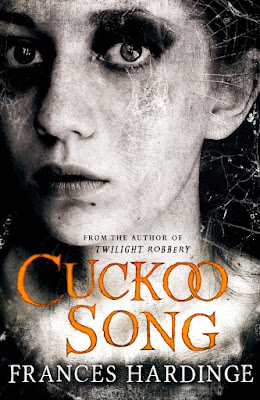
















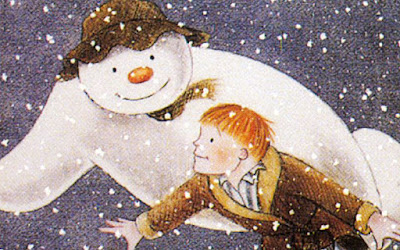









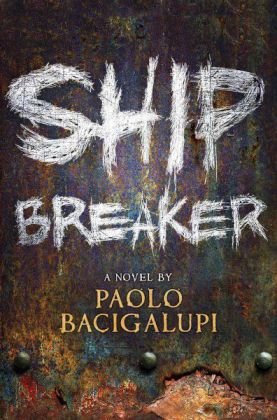
 My text rework is still going OK, so I feel I have earned the time to scan in some more of my train sketches and talk to you properly about
My text rework is still going OK, so I feel I have earned the time to scan in some more of my train sketches and talk to you properly about 
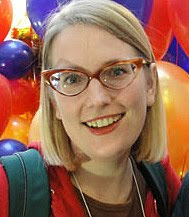

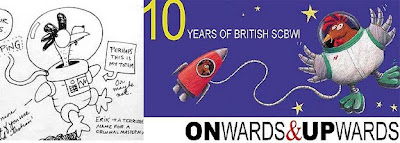
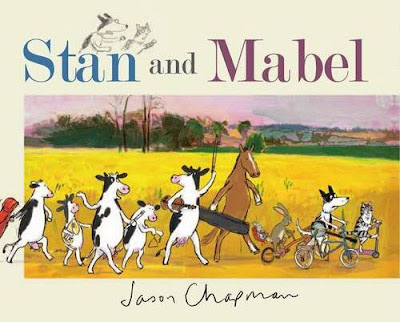
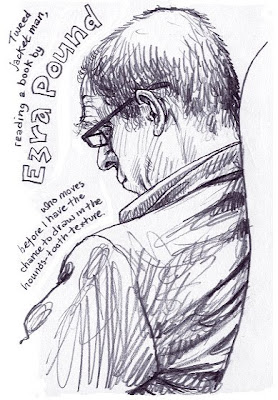
 The first tip comes from
The first tip comes from 



 It was the sight of the zucchini fiori that got me started… those furled globes waiting to be filled with ricotta and basil. Somewhere in the 70’s Shirley Conran wrote in Superwoman that life’s too short to stuff a mushroom. Well life’s too short, NOT to stuff a zucchini fiori and dip it in egg and Japanese breadcrumbs and fry till golden. And then there are the heaps of different sized and shaped tomatoes… some for roasting, some for salad, some for gazpacho… that fill my basket because we all know the same tomato can't be used for everything!
It was the sight of the zucchini fiori that got me started… those furled globes waiting to be filled with ricotta and basil. Somewhere in the 70’s Shirley Conran wrote in Superwoman that life’s too short to stuff a mushroom. Well life’s too short, NOT to stuff a zucchini fiori and dip it in egg and Japanese breadcrumbs and fry till golden. And then there are the heaps of different sized and shaped tomatoes… some for roasting, some for salad, some for gazpacho… that fill my basket because we all know the same tomato can't be used for everything!



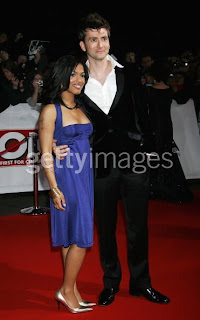
It was a great conference and you were a great keynote! In fact, one of the best!
Wow - thank you Candy: praise indeed! I'm so pleased.
Hi Lynne, thank you for the big fat Stanley and Mabel mention and links on your lovely blog. It was really lovely to meet you at the Winchester party - I'm a BIG admirer of your work so it was a real thrill!
Our shared surname - someone at the party mentioned that a few people thought we were married but had had an argument because we weren't spending the evening hand in hand!
Only wish I'd been there for your talk - sounds inspiring.
LOL! That's brilliant, wish I'd known - we could have played it up...
Terrific drawings - you make it look so easy Lynne!